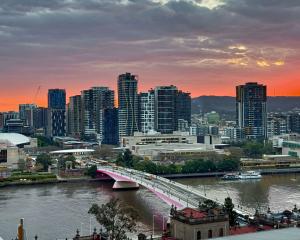Searching for the best camp sites in New Zealand, Sarah Bennett and husband Lee Slater travelled 20,000km last summer.
They were looking for places of outstanding natural beauty which had things to do nearby, Sarah Bennett says.
They love to set up camp in a beautiful spot, and just hang out - go for walks, read, fish, let the kids run about and explore.
"People move around too much on their holidays, even if they just stay in a motel and go to the mall every day," she said.
The couple selected 66 places throughout the country where you can pitch a tent or park a van and enjoy the natural surroundings; sites that take you right into the landscape, such as the rolling high country of Molesworth or the schisty outcrops of Central Otago.
Naturally, many Department of Conservation sites feature in their selection, but also some commercial sites.
"We were really pleasantly surprised to see there were so many good commercial campsites that were still in really beautiful places.
"One thing that struck me as we went along, a lot of campground owners are actually quite green people.
"I guess it's something about managing a form of accommodation that is environmentally quite low impact, and in those wider, more open spaces, a lot of managers seemed to be doing things like restoring streams and planting boundaries."
Back-to-nature camping may not be for everyone, but for those who don't mind a bit of dark and a dicey toilet and no electricity, it's an incredible experience for incredible value.
Most Doc sites cost only a few dollars per person a night and now have flush toilets and drinking water.
It's hard to find a long drop at car-accessible Doc sites these days, she says.
Even though some of the top-end Top 10 holiday parks in the high season can be pricey, camping is generally still quite affordable and some councils even provide free sites, such as at Monkey Island at Te Waewae Bay (and a handful of others in Southland), at Reids farm near Taupo, and the Waimakariri Doc site on the Arthur's Pass road.

"Last summer, because we were mixing with a lot of tourism-related people, whether they were Doc rangers or people at the regional tourism organisations, we were coming across disgruntled citizenry," Ms Bennett says.
Among the problems are human faeces and toilet paper left where others will encounter them, litter, and streams and waterways polluted by detergent.
"It's become quite a significant problem, and the reason it's become such a big problem is the advent of those small backpacker vans without toilets," she says.
"The ripple effect from this is that councils such as Queenstown Lakes are clamping down on freedom camping and Coromandel has instituted a fine and I suspect more regional councils will be instituting bylaws to try to prevent people doing it."
The Freedom Camping Forum, (www.camping.org.nz) has been set up to inform and educate both visitors and locals, she says.
"People don't actually know the basics of how to dispose of their waste properly - even New Zealanders who haven't spent time in the bush don't realise you have to bury your toilet waste and pick a spot away from a waterway - that's basic.
"If you are travelling round in a car, throw a little trowel in."
"Every year you see tourists washing their hair or clothes or dishes in streams in national parks, polluting the water with detergents.

Let's Go Camping: 66 great places to pitch your tent or park your van, by Sarah Bennett and Lee Slater, is published by Random House in conjunction with AA (pbk, $39.95). Go easy
Tips for environmental care and low-impact camping
- Take rubbish away with you or put it in the proper bins - even those bottle tops, cigarette butts and teabags.
- Use toilets where provided. If you are caught short, bury your toilet waste in a shallow hole well away from waterways, tracks, campsites and huts. Take a small trowel with you.
- Wash dishes, clothes and yourself using a bucket or bowl away from lakes and waterways and empty the soapy water on the ground so it is filtered before returning to the water table.
- Empty portable toilets and waste-water tanks in proper dump stations - a list of locations is available from information offices.
- Preferably use portable fuel stoves for cooking. Check fire regulations before lighting a fire, and use only dead wood and make sure it is extinguished before leaving.
- Protect flora and fauna, and respect cultural and historic sites.
- Consider others. People go into the country and bush for many reasons, including peace and quiet.
- Take only photographs and leave nothing behind.

Asked for her favourite southern camp sites, Sarah Bennett says Mavora Lakes is one of the most beautiful Doc campsites in the country; Pounawea Motor Camp is probably her favourite commercial camp ground in the country, with sea lions around the corner, many birds and an original piece of virgin bush; and in Dunedin, Portobello Village Tourist Park, is a low-key family camping spot where they often stay. Freebies
The Otago Daily Times has five copies of Let's Go Camping to give away. To enter the draw for one, write your name, address and daytime phone number on the back of an envelope and send it to Let's Go Camping, Editorial Features, Response Bag 500010 Dunedin, or email playtime@odt.co.nz with Let's Go Camping in the subject line, to arrive before November 16. The long tradition of Kiwi camping holidays is illustrated by these posters on display at the Hocken Gallery in Dunedin. "On Vacation'' is on show until February 20, 2010.













